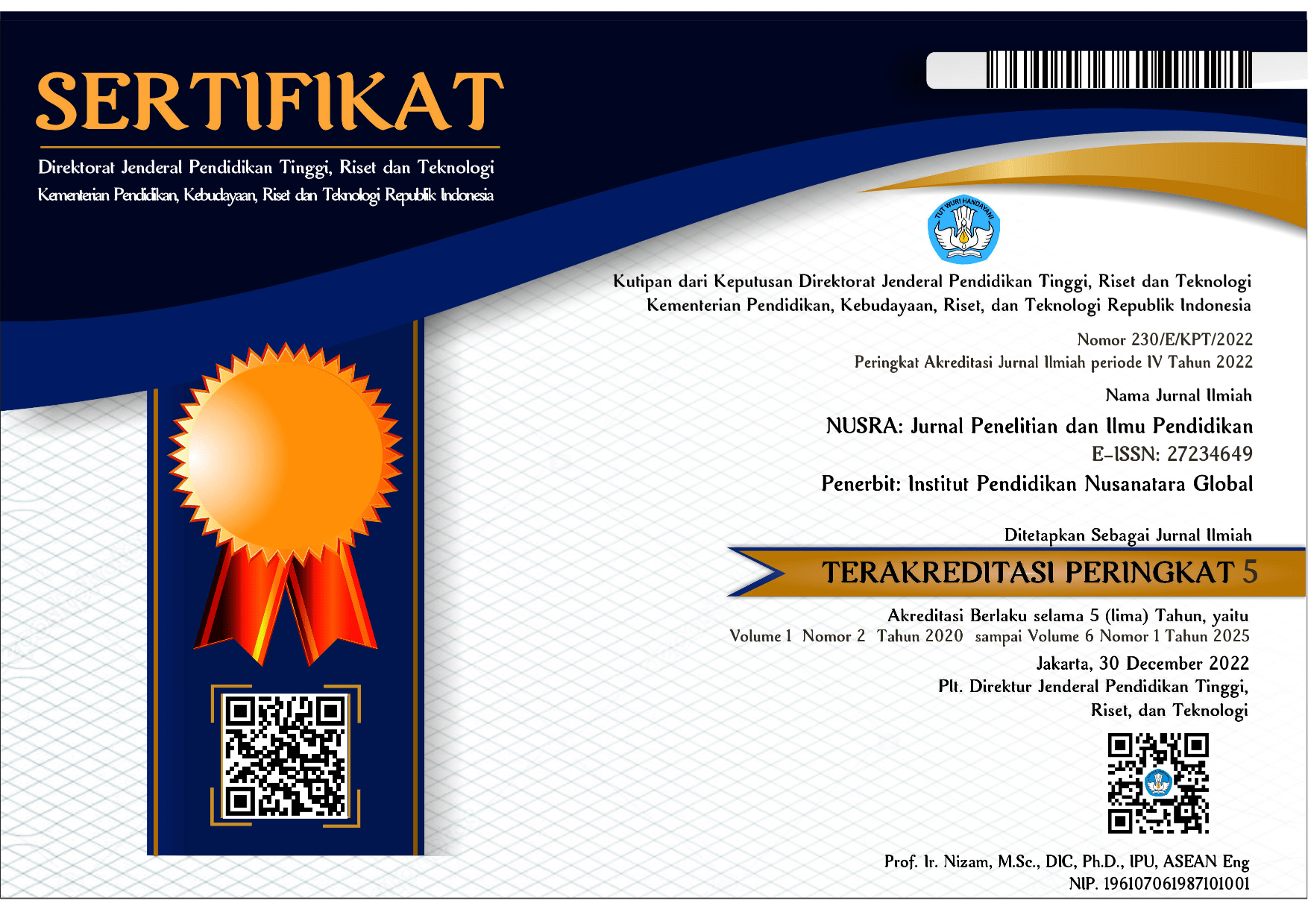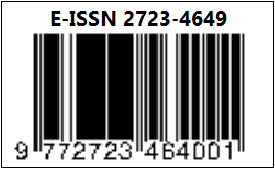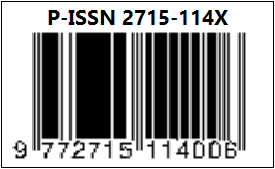EDUCATING STUDENT AT MUSEUM
DOI:
https://doi.org/10.55681/nusra.v4i4.1676Keywords:
Museum, Tour Guide, Tourist, Cultural, EducationAbstract
Museums are buildings used as storage, maintenance, security and utilization of historical relics, art and science for permanent exhibition to the public (tourists) as a tourist attraction that provides educational values to tourists or visitors. To meet the needs of visitors in the museum, competent tour guides are needed as parties who provide information or provide education about the collections owned by the museum being visited. Therefore, the purpose of this journal is to review how tourists learn in museums through tour guides and what the role of tour guides as educators is, namely guiding tourists, providing information, introducing new things from the museum to visitors, informing visit regulations about things that can and cannot be done while in the museum and maintaining quality service. To fulfill the criteria of tour guides and maintain the quality and service to visitors, it is necessary to have continuous training for tour guides. This research uses a descriptive qualitative research method that aims to analyze and describe how visitors or tourists gain understanding or knowledge about the museum through the role of tour guides and what kind of tour guides educate visitors. Researchers use several methods library data collection methods, reading and recording, and processing research materials. In this study, researchers found that tour guides have an important role as educators to educate tourists from the beginning to the end of a visit to the museum.
Downloads
References
Al-Qudah, A. A., Al-Okaily, M., & Alqudah, H. (2022). The relationship between social entrepreneurship and sustainable development from economic growth perspective: 15 ‘RCEP’countries. Journal of Sustainable Finance & Investment, 12(1), 44-61.
Bhuiyan, M. A. H., Islam, R., Siwar, C., & Ismail, S. M. (2010). Educational tourism and forest conservation: Diversification for child education. Procedia-Social and Behavioral Sciences, 7, 19-23.
Cambourne, B., & Macionis, N. (2004). Linking food, wine and tourism: The case of the Australian capital region. In Food tourism around the world (pp. 280-296). Routledge.
Irawati, Y. (2013). Metode Pendidikan Karakter Islami Terhadap Anak Menurut Abdullah Nasih Ulwan dalam Buku Pendidikan Anak dalam Islam dan Relevansinya dengan Tujuan Pendidikan Nasional (Doctoral dissertation, UIN Sunan Kalijaga).
Johnson, P., & Thomas, B. (1998). The economics of museums: A research perspective. Journal of cultural economics, 75-85.
Jumadil, J., & Siswana, S. (2023). Communication Strategies Used By Tourist Guides At Benang Stokel Central Lombok. NUSRA: Jurnal Penelitian dan Ilmu Pendidikan, 4(1), 74-80.
Karp, I., Kreamer, C. M., & Levine, S. (Eds.). (1992). Museums and communities: The politics of public culture. Smithsonian Institution.
Liao, B., Ali, Y., Nazir, S., He, L., & Khan, H. U. (2020). Security analysis of IoT devices by using mobile computing: a systematic literature review. IEEE Access, 8, 120331-120350.
Tsaur, S. H., Huang, C. C., & Luoh, H. F. (2014). Do travel product types matter? Online review direction and persuasiveness. Journal of Travel & Tourism Marketing, 31(7), 884-898.
Mahmud, N., Arifin, A. A., & Mou, L. (2021). Kajian Strategi Peningkatan Mutu Pendidikan Anak Usia Dini. Jurnal Ilmiah Cahaya Paud, 3(1), 140-149.
Newton-John, T. R., Mason, C., & Hunter, M. (2014). The role of resilience in adjustment and coping with chronic pain. Rehabilitation psychology, 59(3), 360.
Nuriata, S. (2014). Perencanaan dan Pelaksanaan Perjalanan Wisata Konsep dan Aplikasi. Bandung: Alfabeta.
Randall, C., & Rollins, R. B. (2009). Visitor perceptions of the role of tour guides in natural areas. Journal of Sustainable Tourism, 17(3), 357-374.
Ravelli, L. (2007). Museum texts: comunication frameworks. Routledge.
Sampelan, S. N. (2015). Pramuwisata Di Kota Manado. HOLISTIK, Journal Of Social and Culture.
Smith, C., & Jenner, P. (1997). Educational tourism. Travel & Tourism Analyst, (3), 60-75.
Suyitno, I. (2005). Proposisi Bentuk Kosong dalam Wacana Slogan: Kajian Tindak Tutur Wacana Slogan. Gadjah Mada University.
Wardhani, S. (2008). Analisis SI dan SKL mata pelajaran matematika SMP/MTs untuk optimalisasi tujuan mata pelajaran matematika. Yogyakarta: PPPPTK.
Weiler, K. (1991). Freire and a feminist pedagogy of difference. Harvard educational review, 61(4), 449-475.
Werblin, F. S., & Copenhagen, D. R. (1974). Control of retinal sensitivity: III. Lateral interactions at the inner plexiform layer. The Journal of General Physiology, 63(1), 88-110.
Von Rueden, L., Mayer, S., Sifa, R., Bauckhage, C., & Garcke, J. (2020). Combining machine learning and simulation to a hybrid modelling approach: Current and future directions. In Advances in Intelligent Data Analysis XVIII: 18th International Symposium on Intelligent Data Analysis, IDA 2020, Konstanz, Germany, April 27–29, 2020,
Proceedings 18 (pp. 548-560). Springer International Publishing
Downloads
Published
How to Cite
Issue
Section
License
Copyright (c) 2023 NUSRA: Jurnal Penelitian dan Ilmu Pendidikan

This work is licensed under a Creative Commons Attribution-ShareAlike 4.0 International License.














